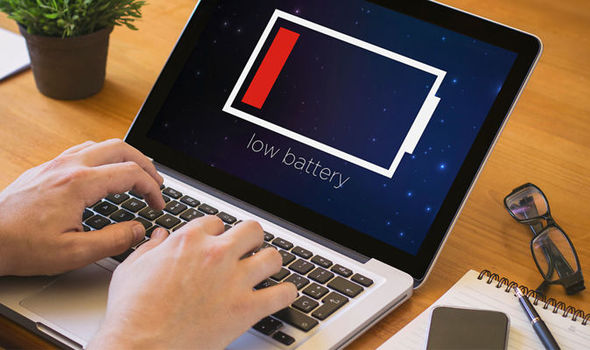It is known that MacBooks have a long battery life, but with time, the battery health can deteriorate as well. Mac users may find it frustrating when their device doesn’t have an optimal battery life or charging. You can, however, solve battery life or charging problems on Macs by doing several useful things. You can do it manually, but if you don’t have idle time, you can also use the best Mac cleaner. By using this software, Mac will be automatically optimized and all unnecessary data will be deleted. As a result, battery life gets improved.
However, for the manual tips, check out this post where we discuss how to deal with battery-related problems on your Mac.
Mac Charging or Battery Life Issues: Tips to Resolve Them
-
Leave Optimized Charging On
- Optimized Charging uses a particular feature in order to adapt charging behavior according to your particular usage pattern. It monitors the battery percentage and waits before charging fully to minimize the time spent at 100 percent.
- The sweet spot for lithium batteries is between 80 percent and 40 percent. A battery’s performance is negatively affected by charging to 100 percent and letting its percentage drop too low.
- This setting can be found under System Preferences > Battery > Battery. It will wait till your Mac learns your daily habits before fully charging your device, so the battery spends less time at 100%.
- You can use this feature on iPhones, iPads, and MacBooks in order to extend the battery’s life.
-
Check Your MacBook Battery Health
- In order to check the battery health of your MacBook, navigate to System Preferences > Battery > Battery and click on “Battery Health” to see a simple overview.
- Detailed information, including charge cycle count, can be found by clicking on the Apple logo in the top-left corner of your screen, then selecting “About This Mac”. Next, click “System Report” which is in the “Overview” tab. Then, Scroll to “Power” and under “Health Information” you can see your battery’s cycle count.
- Modern MacBook batteries are rated for about 1000 cycles, which equates to three years of average use. You can check your Mac’s battery health report to determine when it may need replacement.
-
Use Settings That Optimize Battery Life
- Mac battery life is affected by how your Mac is configured and how you use it. The battery life of your device can be extended by using settings that help conserve energy.
- Check the battery’s health and ensure that it is functioning normally. In case your battery requires service or if it is lowered charging capacity affects your experience, make sure you get it evaluated at an Apple Store or Apple Authorized Service Provider, or contact Apple directly.
-
Resolve Battery Charging Issues
- The battery status menu in the menu bar shows the amount of charge in your battery. Besides showing whether it is charging, it also shows if any of your apps or display are using significant power.
- You should use optimized battery charging with macOS Big Sur or later versions when your Mac is plugged into Additionally, this menu displays information such as whether charging is paused. You can also see when your battery is fully charged.
In addition, you can resolve the battery issue by using the best Mac cleaner software. Because the new Mac cleaners and optimizers have an overall optimization option.
- In some cases, your battery may not appear fully charged (100%), even when the power adapter is connected for a long time. In this way, the battery is charged optimally, which helps prolong its overall life.
- If your battery does not charge, check that you are using the correct power adapter for your Mac.
- In the event that you are using an Intel-based Mac, it may be helpful to reset the SMC.
-
Calibrate Your Battery
It is important to calibrate your battery in order to achieve the best performance. It is not necessary to calibrate your battery, but it can enhance its life and give more accurate information about its charge status. It is not necessary to calibrate MacBooks, MacBook Pros, and MacBook Airs introduced after mid-2009. Nonetheless, you can calibrate the battery in older models by following these steps:
- Use your Mac at least for two hours while it’s plugged in.
- Until you see any Low Battery notifications, use only battery power on your Mac.
- If you see a warning, save anything you are currently doing and continue using your Mac.
- Turn off your Mac once it goes to sleep and leave it turned off for up to five hours.
-
Replace the Battery
Occasionally, none of the tips will make a significant difference, and the battery may be too old or damaged to make a significant difference.
- A Mac battery is typically capable of lasting approximately 1000 cycles; after reaching this limit, it must be replaced.
- In the case of older MacBooks, you may be able to replace the battery yourself. Nevertheless, it is safer to arrange an appointment with a certified repair shop and have it completed on your behalf.
Final Words
Basically, these are a few tips that can help you if your Mac is not charging properly or having charging issues. If you follow these tips, you will definitely get the best outcome and have an easier time dealing with all these issues. If you don’t have time to manually clean and optimize your Mac, choose the best Mac cleaner and optimizer. Using it will optimize your Mac’s overall performance, which will help you to have fewer issues related to battery life.


More Stories
Looking for an Electric Motorcycle Showroom in Costa Mesa, CA? Tips, Benefits, and What to Expect!
Dive Deep with the HM Digital Pocket Size TDS Meter: Your Key to Water Clarity!
The Hidden Meaning of 2131953663: A Closer Look at a Numeric Code